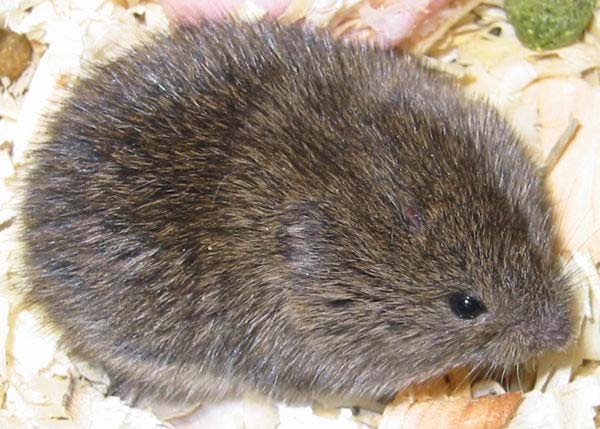Protect Your Lawn: Proven Vole Control Methods Unveiled!
Wiki Article
Mastering Vole Parasite Control: Extensive Insights on Infestation Avoidance and Treatment Strategies
As homeowner and caretakers, the existence of voles can posture a considerable challenge to maintaining the stability of our outdoor areas. Recognizing the complexities of vole habits is important in creating efficient pest control approaches. By identifying the subtle indicators of vole invasion at an early stage, we can take positive steps to stop extensive damages. In this discussion, we will certainly explore the nuances of vole actions, explore the identification of problem indicators, and discover one of the most efficient prevention and therapy methods. Remain tuned to uncover the insights that will encourage you to understand vole insect control and guard your property against these elusive rats.Comprehending Vole Habits
Checking out the foraging patterns of voles supplies useful understandings right into their actions and habitat preferences. By observing their foraging behavior, scientists can get a much better understanding of where voles favor to develop their habitats and the extent of their ecological influence.
Research study indicates that voles exhibit selective feeding routines, preferring seeds, bulbs, and roots - vole yard damage. This dietary choice affects their foraging patterns, leading them to areas abundant in greenery and ground cover. In addition, voles are understood to create intricate tunnel systems for foraging and nesting purposes, suggesting a high level of versatility to their surroundings
Recognizing vole behavior is essential for executing targeted pest control actions that disrupt their environment preferences and foraging tasks. By studying their habits, professionals can develop extra effective avoidance and treatment methods to manage vole invasions.
Identifying Indications of Vole Invasion
Vole infestations can be found by identifying specific signs of their presence in an area. Among one of the most usual signs of a vole infestation is the visibility of surface runways. Voles produce networks of slim pathways on the ground that are commonly about 2 inches broad. These paths are often discovered in verdant locations or beneath mulch or ground cover where voles can relocate freely and look for food.One more vital indication of vole infestation is the presence of small burrow openings in the ground. Voles dig shallow burrow systems with multiple entrances and leaves. These burrows function as shelter and nesting sites for the voles. Additionally, voles are known to leave behind chewed plant stems, roots, and bulbs near their burrow openings, suggesting their feeding activity in the location.
Discovering these droppings along runways or near burrow openings can confirm a vole infestation. By being vigilant for these indicators, residential property owners can promptly attend to vole invasions and prevent further damage.
Implementing Positive Prevention Steps
To efficiently reduce the risks connected with vole problems, residential property owners can proactively apply a variety of safety nets targeted at guarding their gardens and landscapes. One crucial action is to maintain a well-trimmed yard and frequently remove tall weeds and thick greenery, as voles are brought in to areas using ample cover. Mounting barriers such as equipment towel underground around prone locations like garden beds can likewise help stop vole breach. Additionally, maintaining yard locations clean and decreasing clutter where voles could hide or nest is important in lowering their presence.Additionally, utilizing natural vole deterrents like castor oil-based repellents or predator urine can function as efficient safety nets. It is additionally suggested to routinely examine outside areas for any type of indications of vole activity, such as runways or vole pest control burrow openings, to address possible invasions immediately. By embracing these positive prevention techniques, homeowner can substantially reduce the chance of vole damages and preserve the health and wellness and appearances of their landscapes.
Reliable Therapy Techniques
Integrating targeted capturing approaches and making use of accepted rodenticides are necessary components of effective treatment techniques for handling vole infestations. Normal surveillance and maintenance are also crucial facets of successful therapy strategies to guarantee that vole populations are kept under control. By incorporating trapping, rodenticides, habitat modification, and regular monitoring, efficient vole insect control can be attained.
Surveillance and Maintenance Tips
Preserving a systematic timetable for monitoring and carrying out routine upkeep tasks is critical to maintain the effectiveness of vole bug control steps. Routine tracking enables the very early detection of vole activity, enabling timely intervention before problems get worse. To efficiently monitor vole populaces, purposefully placed traps can be made use of in vole runways or near burrow entrances. By regularly checking these catches, homeowner can gauge the extent of vole activity and change control approaches accordingly.In addition, maintaining a well-kept and clean landscape is vital in vole avoidance. Clearing up away debris, such as piles of wood or dense plants, eliminates prospective vole habitats. Consistently cutting lawns and trimming plant life aids lower vole concealing places and lessens their access to food sources.

Final Thought
Finally, mastering vole parasite control calls for a solid understanding of vole actions, the capability to identify signs of problem, carrying out positive prevention steps, reliable therapy approaches, and regular monitoring and maintenance. By taking an extensive strategy to vole control, people can effectively take care of and stop problems, ultimately securing their property and bordering atmosphere from damage brought on by these little rodents.In this conversation, we will explore the nuances of vole actions, dig into the recognition of infestation signs, and discover the most efficient avoidance and treatment techniques.Integrating targeted capturing methods and making use of authorized rodenticides are crucial elements of efficient treatment approaches for managing vole invasions. To effectively monitor vole populations, strategically put traps can be used in vole paths or near burrow entryways. Examining and fixing any damages to these frameworks ensures that vole control stays effective in safeguarding homes from problems. By integrating these tracking and maintenance practices right into a thorough vole parasite control plan, people can successfully handle vole populaces and protect their residential or commercial properties from damage.
Report this wiki page